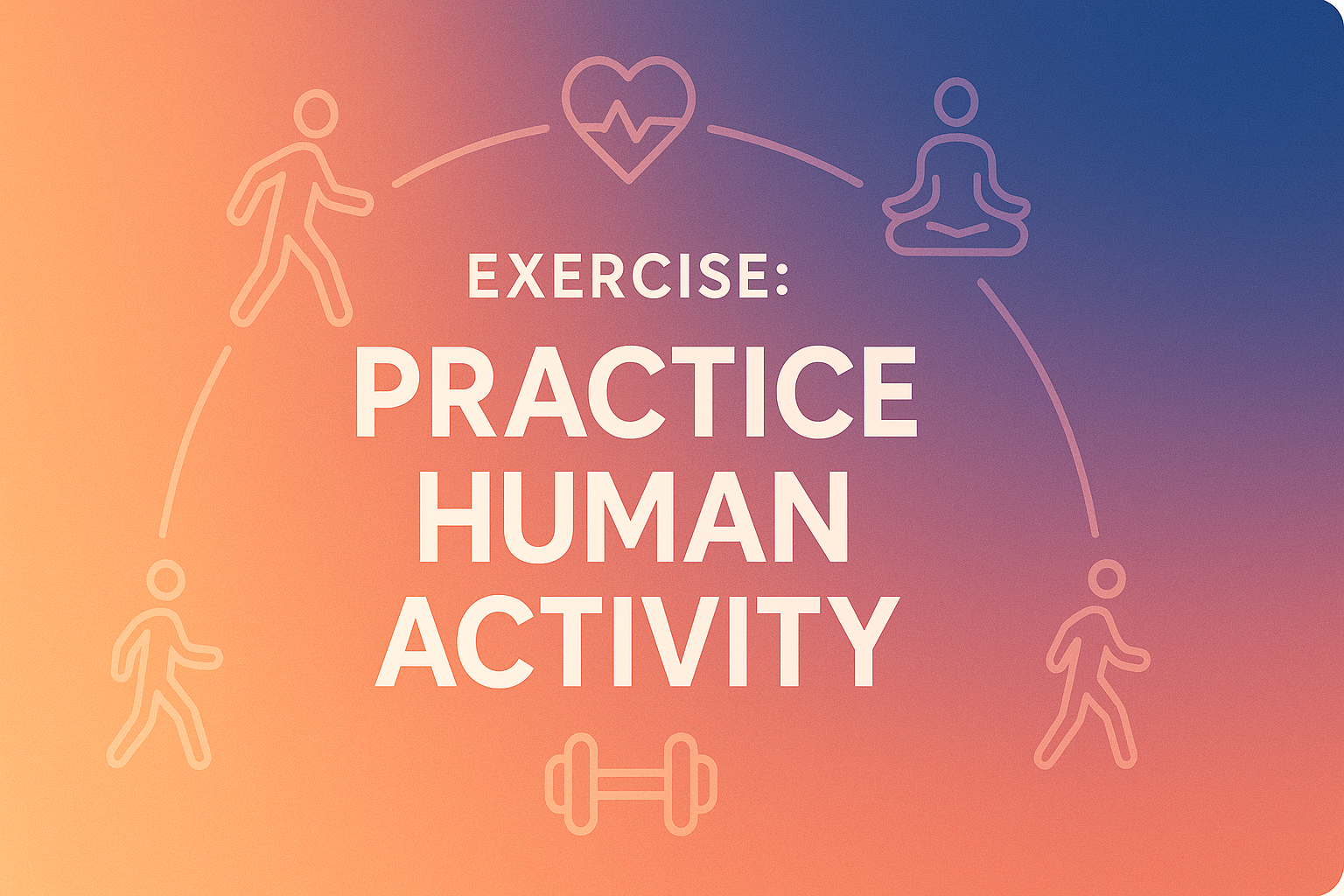Exercise

When people talk about "exercise", they often mean physical exercise. But if you Google "define exercise", one of the definitions that shows up is "a process or activity carried out for a specific purpose, especially one concerned with a specified area or skill.
In school, when we performed exercises, we were practicing a particular skill. That's exactly what physical exercise is: practicing being a human being.
The activities that we perform as humans are not easy. Walking is not easy. Lifting things off the ground is not easy. Moving in space while protecting your body and maximizing performance and efficiency is not easy. I have not seen a single person reach a skill ceiling for the expression of movement. We can always get better.
I have spent tens if not hundreds of hours over the years diligently practicing walking. When I step, I want to:
- Make sure that I feel the force from the ground equally throughout my foot
- Have my feet, knees, and hips inline with each other
- Have my shoulders swinging from their sockets in a straight line through the sagittal plane
That might sound easy, but in practice, it really isn't. If I don't pay attention to what I'm doing, I often supinate my feet (walk on the outer edges) and fall off balance. And if I don't pay attention to the velocity of various body parts, I am bound to screw something up.
If you watch me move around, I probably look like a robot. That's intentional. My posture is often very upright; when possible, I try to hinge only at the ball-and-socket joints (hips and shoulders); and I brace various muscle groups to protect my spine.
That's not by choice—it's by necessity. If I don't do those things, I often find myself in pain. I've learned the hard way through two herniated discs, a microdiscetomy on my L-4/5 (surgery to shave off some of the disc between the 4th and 5th vertabrae of the lumbar spine), and years of chronic, debilitating, omnipresent pain.
While I sometimes wish I didn't have to go through all that, I know that that's not possible. That lesson is not one you can be told—you have to learn it yourself.
Brian Carroll went through a much more terrifying journey than I did. After multiple herniated discs and multiple fractures to his vertabrae and sacrum, Brian was told by every doctor he spoke to for years that he required surgery and he would never lift weights again. He then came across Dr. Stu McGill whom helped him relearn every single movement pattern he knew—sitting, standing, folding laundry, everything. Stu helped Brian avoid surgery, get out of pain, and get back to breaking world records. They went on to write the book "The Gift of Injury" together. Afterwards, Brian, again, went on to break the all-time world record equipped squat (squat suit, briefs, and knee wraps allowed and a shorter range of motion) across all weight classes at 1306lbs[1], and he did it completely pain-free. ONE THOUSAND, THREE HUNDRED AND SIX POUNDS. I haven't even had more than 405lbs on my back before. Imagine the kind of anatomical rigidity required to have 1306lbs on your spine. Oh my Dog...
People have often told me that I shouldn't squat or deadlift again, but that's not a recipe for preventing pain or injury. I will never be able to avoid doing those movements. I squat and deadlift all day long. I pick up Amazon packages off the ground (deadlift), move them somewhere else (carry), and put them down (squat) constantly. Instead, what I have needed to do is learn how to perform those movements while protecting my body from injury, and allow my body to recover afterwards. Should I be deadlifting 500lbs right now? No. But that doesn't mean I shouldn't deadlift at all. I just need to practice it at a lighter weight in a slower, more-controlled fashion.
When people talk about "functional" exercise, this is exactly it—practicing movements that are functional to human beings. When I pick up a heavy object off the ground, that's a deadlift. When I go from standing to laying suppine (on my back, face-up) and back up again, that's a Turkish get-up. When I pick up a very light object off the ground with one hand while balancing on the opposite foot, that's a one-legged RDL (Romanian deadlift). When I pick up my daughter off the ground and throw her into the air, that's a clean and press.
You don't have to practice these movements in a gym. I haven't been to the gym in a week, something that has very rarely happened in the last 10 years. And you know what? I'm much better at various movements now than I was a week ago. You know why? Because I have been practicing them constantly throughout the day—no weights required.
Refs:
- 1: Brian Carroll 1306lb squat: (sound warning - lots of yelling) https://www.youtube.com/watch?v=rasKQcE-YPg